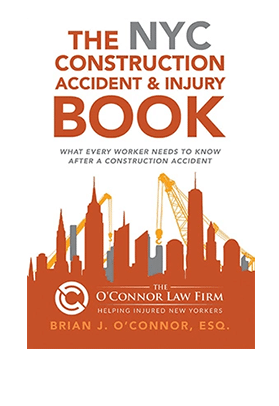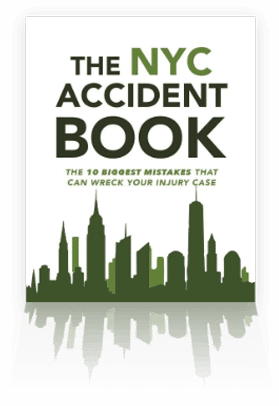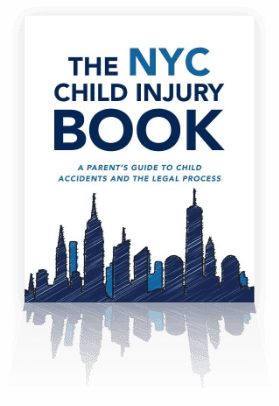New York Labor Law 241(6) and Industrial Code Violations
Construction is one of the most dangerous trades in New York. Due to heavy machinery and the need to work at great heights, the trade itself is inherently dangerous, but lax safety also contributes to many accidents. The construction industry consistently has the most fatal accidents of all industries in New York City, and thousands of workers are injured around the state.
The New York Labor Law was our state’s attempt to improve the safety of construction, excavation, and demolition. Under the law, general contractors and project owners must ensure that their worksites are safe. And the legislature has provided injured workers with a powerful right to seek compensation when they are injured due to dangerous conditions.
The O’Connor Law Firm is dedicated to helping any construction worker injured on the job. Please contact our firm to learn more about your rights and schedule a consultation with an experienced construction accident attorney.
Why this Law is Important
Virtually all employers in New York must purchase workers’ compensation insurance, which will pay medical bills and disability benefits to workers injured on the job. Unfortunately, there are some disadvantages built into the workers’ comp system. Primarily, benefits are usually capped, and the law prohibits injured workers from suing their employers—even when employer negligence contributes to their injuries. Although these benefits are “no-fault,” many workers have substantial uncompensated losses.
The New York Labor Law created a right to sue for workers injured in excavation, demolition, and construction. Without this law, construction workers would only be left with workers’ compensation benefits and no recourse to hold a negligent contractor accountable.
What Injured Workers Must Prove under Labor Law 241(6)
By its own language, the statute applies to those workers involved in excavation, demolition, or construction. Our legal team takes a close look to determine whether you were involved in a qualifying activity at the time of your injury.
A contractor or owner is only liable if you were injured by a violation of a specific regulation under the New York Industrial Code, specifically Rule 23. This rule contains a long list of safety regulations. According to New York courts, you can base liability only if the rule is sufficiently concrete and not a general safety standard.
For example, Rule 23-2.5 specifically states that those working in shafts must be protected from falling, and should have a platform consisting of two-inch-thick plywood installed no more than 15 feet below them, or else an approved life net must be installed below to catch them. This rule is very specific, and a violation could serve as the basis for a Labor Law lawsuit.
As a general rule of tort law, the violation also must contribute to or cause your injuries. There might be many safety rule violations on a job site. But if none of them contributed to your accident or your injuries, you can’t use them as a basis of liability.
Types of Accidents Covered under the Industrial Code
Workers injured in all sorts of New York accidents could seek compensation for a lawsuit under Labor Law Section 241(6):
- Heavy machinery accidents
- Ladder or scaffold accidents
- Falls into holes
- Trip and fall or slip and fall accidents
- Forklift accidents
- Toxic chemical exposure
- Electrocution
- Failure to provide safety equipment
If you were injured while working construction, demolition, or excavation job, then you should quickly schedule a meeting with an experienced construction accident attorney. Never assume that your accident is not covered by this law. Even if Section 241(6) does not apply, a different Labor Law could provide the right to sue.
Employers Cannot Delegate their Duties
One argument many contractors or owners raise is that the safety violation was committed by someone they hired, i.e., an independent contractor. Under New York’s general principles of vicarious liability, employers are not responsible for negligence committed by an independent contractor. However, the Labor Law forecloses this type of defense. As New York courts have explained, the safety obligation is “nondelegable” and contractors cannot slide out from under responsibility by blaming an independent contractor. Consequently, the contractor/owner is on the hook.
This rule makes sense. Ultimately, a general contractor or owner is responsible for supervising subcontractors and should address safety lapses with them. Individual workers are not well-positioned to supervise anyone, so they should not suffer when injured by a safety lapse.
The defendant also does not need actual or constructive notice of the violation to be liable. It is enough that the violation exists and contributes to our client’s accident. Because the goal is to improve worker safety, contractors or owners should regularly inspect the job site.
Compensation for Accident Victims
If you were injured by a safety violation at work, you might seek full compensation for your losses, including:
- Medical care
- Future medical expenses
- Rehabilitation costs
- Lost wages
- Diminished earning capacity
- Lost benefits
- Pain and suffering
A lawsuit under the Labor Law can supplement a workers’ compensation claim. Although workers’ comp typically provides fast benefits, they are often capped. A worker typically only gets two-thirds of their average weekly wage as a lost wage benefit. This means that workers are not being made whole.
A claim under Section 241(6) can provide badly needed compensation to fully make up for an injury. Someone suffering a back injury, head injury, or disfigurement can suffer tremendously. Sadly, workers’ comp does not pay compensation for pain and suffering.
Our attorney can meet with clients to review their cases. Based on what we hear, we can help our clients understand how much their claims might be worth. Contractors should have sizeable insurance policies which they take out specifically for situations such as these.
Comparative Negligence and Section 241(6)
Contributory negligence can reduce the amount of compensation an injured worker receives. Accidents are not always 100% the fault of the employer. Some workers might contribute to their accidents by not donning personal protective equipment, for example. Other examples of contributory negligence include performing a task carelessly or refusing to observe safety regulations.
Comparative negligence can be raised as a defense and, if proven, reduce the defendant’s liability. A worker who is 50% to blame for their injuries would receive only half of the compensation they are entitled to.
Our legal team is skilled at fully analyzing a construction accident and assessing liability, which is often complex. We can build evidence to support your claim, including the retention of experts to analyze industrial code violations.
How We Help Clients
Our team helps clients bring claims the correct way:
- Gathering evidence. We can visit a job site and take photographs or interview workers who saw the accident. No claim is successful unless there is proof of a safety violation.
- Handling paperwork and communication. Filing a workers’ compensation claim and juggling a lawsuit is paperwork intensive. Injured victims can focus on getting better as we will handle all communications.
- Meeting deadlines. The statute of limitations for Section 241(6) is three years, so a lawsuit must be filed before that deadline. Limited exceptions apply, but no worker should count on them providing extra time to get a claim filed.
Our New York Construction Accident Attorney Provides Peace of Mind
With so much happening at construction sites, even the best sites have safety lapses. However, injured workers should not suffer financially when they are injured due to a safety violation. Instead, the correct parties should be held accountable.
Contact The O’Connor Law Firm today. We can review whether you have a valid legal claim and will identify what other information you will need. Give us a call to schedule a free consultation.




